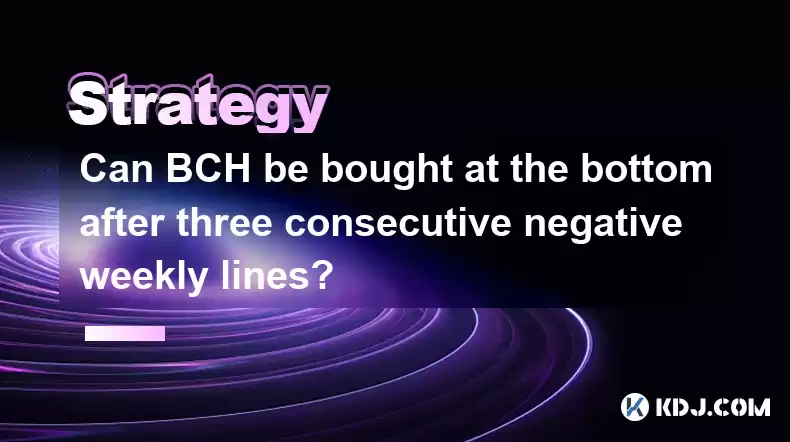-
 Bitcoin
Bitcoin $114500
-0.31% -
 Ethereum
Ethereum $3648
1.11% -
 XRP
XRP $3.033
-0.27% -
 Tether USDt
Tether USDt $0.9999
-0.01% -
 BNB
BNB $758.5
-0.32% -
 Solana
Solana $167.5
1.48% -
 USDC
USDC $0.9998
-0.02% -
 TRON
TRON $0.3331
0.74% -
 Dogecoin
Dogecoin $0.2039
0.25% -
 Cardano
Cardano $0.7419
-0.46% -
 Hyperliquid
Hyperliquid $39.21
2.66% -
 Stellar
Stellar $0.4049
-1.95% -
 Sui
Sui $3.483
-0.56% -
 Bitcoin Cash
Bitcoin Cash $570.8
2.89% -
 Chainlink
Chainlink $16.67
-0.57% -
 Hedera
Hedera $0.2470
-1.57% -
 Ethena USDe
Ethena USDe $1.001
0.00% -
 Avalanche
Avalanche $22.36
1.52% -
 Litecoin
Litecoin $123.4
4.35% -
 UNUS SED LEO
UNUS SED LEO $8.989
0.09% -
 Toncoin
Toncoin $3.324
-2.40% -
 Shiba Inu
Shiba Inu $0.00001219
-1.30% -
 Uniswap
Uniswap $9.811
2.54% -
 Polkadot
Polkadot $3.662
-0.07% -
 Monero
Monero $295.5
-3.85% -
 Dai
Dai $1.000
0.01% -
 Bitget Token
Bitget Token $4.345
0.24% -
 Cronos
Cronos $0.1380
0.95% -
 Pepe
Pepe $0.00001044
-1.14% -
 Ethena
Ethena $0.5981
-4.24%
Can BCH be bought at the bottom after three consecutive negative weekly lines?
Buying BCH after three negative weekly lines is risky; use technical indicators, historical data, and market sentiment to assess if it's truly at the bottom.
Apr 22, 2025 at 07:28 pm

The question of whether Bitcoin Cash (BCH) can be bought at the bottom after three consecutive negative weekly lines is a complex one that requires an understanding of market analysis, technical indicators, and the broader cryptocurrency market environment. In this article, we will delve into these aspects to provide a comprehensive answer to this question.
Understanding Weekly Lines and Market Trends
Weekly lines refer to the price performance of a cryptocurrency over a week, typically represented on a chart. A negative weekly line indicates that the price of BCH has decreased over the past week. When three consecutive negative weekly lines occur, it suggests a sustained downward trend, which can be a cause for concern among investors.
Technical analysis is a method used to evaluate investments and identify trading opportunities by analyzing statistical trends gathered from trading activity, such as price movement and volume. Traders often use various indicators to predict future market movements. In the case of BCH, three consecutive negative weekly lines could signal a potential bottom, but it is not a definitive indicator.
Identifying the Bottom in Cryptocurrency Markets
Identifying the bottom in cryptocurrency markets is notoriously difficult due to their volatile nature. The bottom refers to the lowest point in a price trend before it starts to recover. Several indicators can help in identifying a potential bottom:
- Volume Analysis: A decrease in trading volume as the price falls can indicate that selling pressure is waning, suggesting a potential bottom.
- Oversold Conditions: Indicators like the Relative Strength Index (RSI) can show when a cryptocurrency is oversold, which might indicate a bottom.
- Support Levels: Historical price levels where BCH has bounced back can serve as potential bottoms.
However, even with these indicators, predicting the exact bottom remains challenging. Three consecutive negative weekly lines might suggest that a bottom is near, but it does not guarantee it.
Historical Performance of BCH
Looking at the historical performance of BCH can provide insights into how it has reacted to similar market conditions in the past. Bitcoin Cash was created as a fork of Bitcoin in 2017, and since then, it has experienced significant volatility. Analyzing past instances where BCH experienced three consecutive negative weekly lines can help understand whether these periods were followed by a recovery or further declines.
For instance, if historical data shows that BCH often rebounds after such a pattern, it might increase the confidence in buying at what appears to be the bottom. Conversely, if the data indicates that further declines followed, it might suggest caution.
Risk Management and Buying Strategies
When considering buying BCH after three consecutive negative weekly lines, risk management is crucial. Investors should not put all their capital into one asset, especially in the highly volatile cryptocurrency market. Here are some strategies to consider:
- Diversification: Spread investments across different cryptocurrencies to mitigate risk.
- Dollar-Cost Averaging (DCA): Instead of investing a lump sum at what you believe is the bottom, spread out your investment over time to reduce the impact of volatility.
- Stop-Loss Orders: Set a stop-loss order to automatically sell BCH if it falls below a certain price, limiting potential losses.
Technical Indicators to Watch
Several technical indicators can help investors decide whether to buy BCH after three consecutive negative weekly lines:
- Moving Averages: The 50-day and 200-day moving averages can provide insight into the longer-term trend. If the price of BCH is approaching these averages, it might indicate a potential bottom.
- MACD (Moving Average Convergence Divergence): This indicator can signal changes in the strength, direction, momentum, and duration of a trend. A bullish crossover on the MACD might suggest that the downward trend is reversing.
- Bollinger Bands: These bands can help identify overbought or oversold conditions. If BCH is trading near the lower Bollinger Band after three negative weekly lines, it might indicate a potential bottom.
Sentiment Analysis and Market News
Market sentiment and news can significantly impact the price of BCH. Negative news or a bearish sentiment can prolong a downward trend, while positive news or a bullish sentiment can lead to a quicker recovery. Monitoring social media, news outlets, and sentiment analysis tools can provide additional context for deciding whether to buy BCH at what appears to be the bottom.
For instance, if there is a general bearish sentiment in the market due to regulatory concerns or a major hack, it might be prudent to wait for a more favorable environment before investing. Conversely, if there is positive news about BCH, such as a new partnership or technological advancement, it might increase the likelihood of a rebound.
Practical Steps to Buy BCH
If you decide to buy BCH after three consecutive negative weekly lines, here are the practical steps to follow:
- Choose a Cryptocurrency Exchange: Select a reputable exchange that supports BCH trading, such as Binance, Coinbase, or Kraken.
- Set Up an Account: Register on the exchange, complete the necessary KYC (Know Your Customer) verification, and set up two-factor authentication for security.
- Deposit Funds: Deposit fiat currency or another cryptocurrency into your exchange account.
- Place an Order: Navigate to the BCH trading pair, decide on the amount you want to buy, and place a market order (buys at the current market price) or a limit order (buys at a specified price).
- Secure Your BCH: After the purchase, transfer your BCH to a secure wallet, such as a hardware wallet like Ledger or Trezor, to protect your investment from exchange hacks.
Frequently Asked Questions
Q: How reliable are technical indicators in predicting the bottom of BCH?
A: Technical indicators can provide valuable insights, but they are not foolproof. They should be used in conjunction with other forms of analysis, such as fundamental and sentiment analysis, to make more informed decisions.
Q: Can market manipulation affect the reliability of three consecutive negative weekly lines as a signal?
A: Yes, market manipulation can significantly impact price movements. Large traders or "whales" can influence the market by selling off large amounts of BCH, creating artificial negative weekly lines. It's essential to consider the possibility of manipulation when interpreting these signals.
Q: Should I wait for confirmation of a bottom before buying BCH?
A: Waiting for confirmation can reduce the risk of buying too early, but it also means potentially missing out on early gains if the price rebounds quickly. It's a trade-off between risk and reward, and your decision should align with your investment strategy and risk tolerance.
Q: How does the broader cryptocurrency market affect the decision to buy BCH at the bottom?
A: The broader cryptocurrency market can have a significant impact on BCH's price. If the overall market is experiencing a bearish trend, it might be more challenging for BCH to rebound quickly, even if it appears to be at the bottom. Conversely, a bullish market can provide a more favorable environment for recovery.
Disclaimer:info@kdj.com
The information provided is not trading advice. kdj.com does not assume any responsibility for any investments made based on the information provided in this article. Cryptocurrencies are highly volatile and it is highly recommended that you invest with caution after thorough research!
If you believe that the content used on this website infringes your copyright, please contact us immediately (info@kdj.com) and we will delete it promptly.
- Meme Coins Skyrocket: Is Dogecoin About to Be Dethroned?
- 2025-08-06 03:50:13
- Tether's On-Chain Surge: USDT Dominates and Drives Blockchain Fees
- 2025-08-06 02:50:13
- Bitcoin, Treasury, Country: Bolivia Follows El Salvador's Lead, While TON Strategy Co. Makes Waves
- 2025-08-06 03:50:13
- Succinct's PROVE Token & Mainnet Launch: A New Era for ZK Proofs
- 2025-08-06 02:50:13
- CEA Industries Rebrands as BNB Network Company: A New Era for BNB Treasury
- 2025-08-06 03:55:14
- Terra Classic's Market Module Revival: The v3.5.0 Upgrade and What It Means for LUNC
- 2025-08-06 02:30:12
Related knowledge

How to avoid common crypto investment mistakes?
Jul 13,2025 at 01:35am
Understanding the Risks of Crypto InvestmentInvesting in cryptocurrency can be highly rewarding, but it also comes with significant risks. One of the ...

What is a long-short crypto strategy?
Jul 15,2025 at 10:56am
Understanding the Basics of a Long-Short Crypto StrategyA long-short crypto strategy is an investment approach where traders simultaneously take long ...

What is a long-short crypto strategy?
Jul 11,2025 at 01:28pm
Understanding the Basics of Long-Short Crypto StrategyA long-short crypto strategy is an investment approach where traders take both long and short po...

How to use the RSI indicator for crypto?
Jul 12,2025 at 03:56pm
Understanding the RSI Indicator in Cryptocurrency TradingThe Relative Strength Index (RSI) is a momentum oscillator used to measure the speed and chan...

Is copy trading a good strategy for crypto beginners?
Jul 12,2025 at 08:28am
Understanding Copy Trading in the Cryptocurrency MarketCopy trading is a strategy where novice traders replicate the trades of experienced investors a...

How to build a crypto portfolio with $1000?
Jul 13,2025 at 08:14pm
Understanding the Basics of Cryptocurrency InvestmentBuilding a crypto portfolio with $1000 starts with understanding the fundamentals of cryptocurren...

How to avoid common crypto investment mistakes?
Jul 13,2025 at 01:35am
Understanding the Risks of Crypto InvestmentInvesting in cryptocurrency can be highly rewarding, but it also comes with significant risks. One of the ...

What is a long-short crypto strategy?
Jul 15,2025 at 10:56am
Understanding the Basics of a Long-Short Crypto StrategyA long-short crypto strategy is an investment approach where traders simultaneously take long ...

What is a long-short crypto strategy?
Jul 11,2025 at 01:28pm
Understanding the Basics of Long-Short Crypto StrategyA long-short crypto strategy is an investment approach where traders take both long and short po...

How to use the RSI indicator for crypto?
Jul 12,2025 at 03:56pm
Understanding the RSI Indicator in Cryptocurrency TradingThe Relative Strength Index (RSI) is a momentum oscillator used to measure the speed and chan...

Is copy trading a good strategy for crypto beginners?
Jul 12,2025 at 08:28am
Understanding Copy Trading in the Cryptocurrency MarketCopy trading is a strategy where novice traders replicate the trades of experienced investors a...

How to build a crypto portfolio with $1000?
Jul 13,2025 at 08:14pm
Understanding the Basics of Cryptocurrency InvestmentBuilding a crypto portfolio with $1000 starts with understanding the fundamentals of cryptocurren...
See all articles

























































































